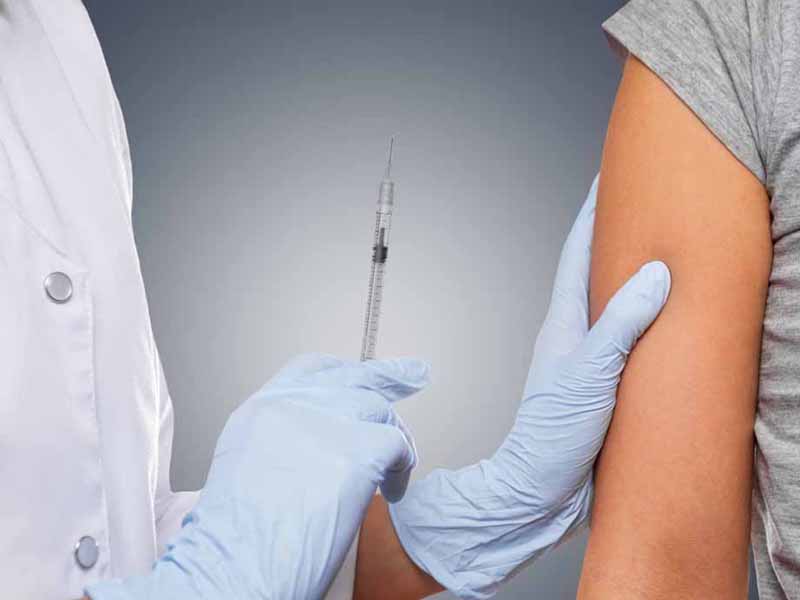CDC, AAFP Release 2018 Immunization Schedules
Updates Include Preferential Shingrix Recommendation, Third MMR Dose for Some
February 06, 2018, 02:53 pm Chris Crawford — The CDC and its Advisory Committee on Immunization Practices (ACIP), together with the AAFP and other medical professional organizations, have released the 2018 adult and childhood immunization schedules.

Changes in this year's schedule include recommending preferential use of the new herpes zoster subunit vaccine (HZ/su; Shingrix), which is approved for use in adults 50 and older, over the currently available herpes zoster live vaccine (Zostavax).
Adult Schedule Highlights
Recent Academy liaison to the ACIP Margot Savoy, M.D., M.P.H., told AAFP News that the biggest update to the adult immunization schedule was the herpes zoster vaccine preferential recommendation. That recommendation came out of the ACIP's October 2017 meeting.
"Both are safe vaccines," she said. "The new subunit vaccine, Shingrix, appears to be significantly more effective at preventing herpes zoster in immunocompetent adults ages 50 and older. So, if you have an adult who has never been vaccinated for shingles, give them Shingrix. If you have an adult who was vaccinated with Zostavax, give them Shingrix too."
Next, for mumps-containing vaccines, Savoy said that although the current two-dose series has been effective in controlling mumps in the United States for decades, recent evidence shows waning immunity has contributed to an increase in outbreaks. Therefore, a third dose of measles, mumps and rubella vaccine is recommended for at-risk patients during outbreaks.
Story Highlights
"Hopefully, most of us will not be involved in needing to give the third dose of mumps-containing vaccine because we will not be managing an outbreak," Savoy said. "Unfortunately, we are seeing ongoing outbreaks of mumps in the U.S., particularly in settings where people have close, prolonged contact, such as universities and close-knit communities."
According to Savoy, during a local outbreak of mumps, the state or local public health department will provide guidance about which contacts are at greatest risk and would benefit from the additional dose.
"In general, people at increased risk for acquiring mumps are those who are more likely to have prolonged or intense exposure to droplets or saliva from a person infected with mumps, such as through close contact or sharing of drinks or utensils," she said.
As for the influenza vaccine, Savoy said not much has changed, even given this year's flu season, which has proven quite deadly.
"While the vaccine hasn't been as effective at preventing influenza infections this year, those who were vaccinated appear to have a much lower risk of death," she noted. "And that alone is reason to continue encouraging your unvaccinated patients to get their flu shot even during the season."
The ACIP will choose and announce the new strains for the 2018-19 season flu shot at its June meeting. It's currently unclear whether live attenuated influenza vaccine (LAIV; FluMist) will return in the upcoming season, said Savoy.
Childhood and Catch-up Schedule Highlights
Like its adult vaccine schedule counterpart last year, the 2018 childhood immunization schedule has been revised to be easier to read, with increased white space and a larger font size in the footnotes section.
Formatting changes include using bulleted lists instead of complete sentences and removing redundant language. Additionally, the title page was updated to include a table listing vaccine abbreviations and product names.
"The ACIP continues to work on clarifying the language and presentation of the vaccine schedules using feedback from clinicians across the country," Savoy explained.
One long-standing source of confusion among physicians that the current schedule aims to address, she said, has been whether the dashes used in ranges meant "between" or "through."
"So, for example, if there is an age range saying '12-18 years,' it means 12 years through 18 years," Savoy said. "In other words, a patient who is age 18 and two days should still get the vaccine because that patient is still in their eighteenth year."
The updated recommendation on mumps-containing vaccine mentioned above also applies to younger patients; a third dose is warranted for at-risk patients when public health departments deem it necessary.
And finally, the recommendation against using LAIV remains in effect for children and adolescents during the current flu season.
Coding Cards and Other Resources
For the first time, the AAFP is offering members an option to buy childhood vaccine coding reference cards.
The card package, which costs $25 for members, includes five desk-reference and five pocket-size versions of the childhood schedule that can be shared with other physicians and practice team members. The quick-reference cards are intended to facilitate payment for administration of 15 vaccinations, with one side of each card supporting ancillary staff administration, and the other side supporting physician counseling with administration.
In addition, Savoy said the Academy offers a variety of resources to support family physicians' work with immunizations, including the AAFP Foundation's recently launched Highlight on VACCINATIONS 4 TEENS program.
And this isn't the only news about vaccines that AAFP members can expect to hear in the coming months, according to Savoy. "Be on the lookout for exciting new announcements from the Commission on the Health of the Public and Science this spring around vaccine tools," she said.